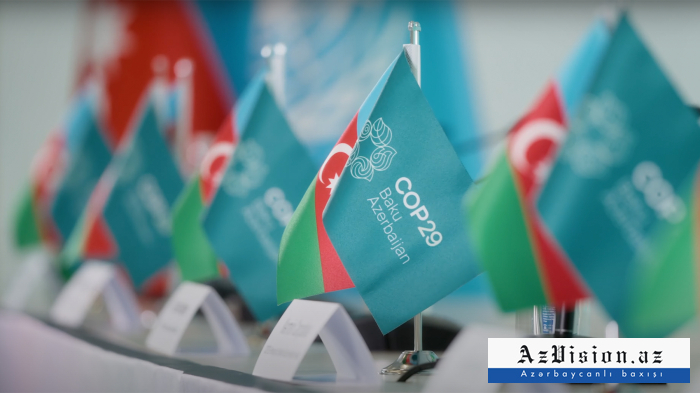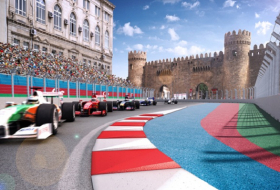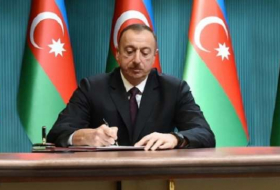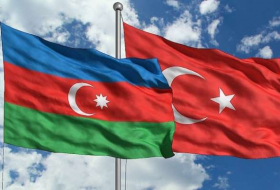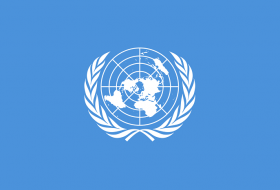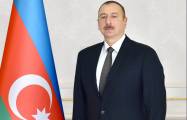On 17 September, the COP29 Presidency announced the COP29 Presidency Initiatives as part of its “Action Agenda” to accelerate progress on climate action and supplement the formal negotiated COP agenda. The Action Agenda represents an ambitious effort by the COP29 Presidency to drive action across all climate pillars and covers a range of key priorities, such as energy, finance, agriculture, cities, human development, and the climate-peace nexus, amongst others. Many of these initiatives, in particular, the Baku Initiative on Climate Finance, Investment and Trade (BICFIT), the Baku Initiative on Human Development for Climate Resilience, and the Multisectoral Actions Pathways (MAP) for Resilient and Healthy Cities all integrate and address cross-sectoral synergies.
Analyzing the summary of the COP29 Presidency Initiatives and Outcomes, it is very important to underline the COP Truce Appeal, which modelled on the Olympic Truce, to highlight the importance of peace and climate action. Moreover, the COP29 Peace and Climate Initiative which is a separate initiative, co-led with partners envisages to deliver tangible outcomes such as establishing a centre of excellence hub to match the needs of the most vulnerable with existing resources and foster further action for the operationalization of various initiatives on the peace and climate nexus.
Why are these initiatives significant? Because climate change is having profound effects on global security and peacebuilding efforts. Climate change is rapidly altering the global security landscape; its security implications are highly diverse and pose a host of complex challenges. Climate change is also shifting the dynamics of peacebuilding. The former Armenia-Azerbaijan conflict has resulted in enormous suffering for people. Azerbaijan faced serious economic, security and environmental challenges. During the post-conflict period, one of the serious environmental challenges in the Karabakh region has been soil and land contamination. Landmine contamination prevents access to agricultural lands and the return of IDP’s to their permanent places of residence.
Many researches prove that armed conflicts have direct impact on climate change because such conflicts create new sources of greenhouse gas (GHG) emissions. For instance, during the active phase of the conflict oil production, storage or transportation infrastructure is usually a direct target. Fires and spills generate emissions, and at times oil infrastructure is actively weaponized. Also, regarding the indirect emissions from active conflicts, one can note that in the early phases of fighting, the main emissions will arise from damaged infrastructure, the loss of vegetation, and delivering humanitarian aid. For example, during the active phase of the former Karabakh war, and even after the November 9, 2020 Declaration, which ended the hostilities, Armenians have burned large forest areas and houses, causing serious environmental damage.
Why a COP Truce Appeal matters and what has been the impact of similar initiatives in the past?
At present, the world is shocked by a series of conflicts that seem to struggle to find a peaceful and lasting solution. The ongoing war between Russia and Ukraine and the conflict between Hamas and Israel kicked off the latest of several wars still raging around the world. Forgotten wars, far from the eyes of public opinion, but no less bloody than others. According to the International Crisis Group, there are currently more than 20 high-intensity conflicts underway. However, if chronic crises and violent escalations are taken into account, the amount raises to 359 conflicts globally. To give some examples, Yemen, South Sudan, Sahel, Central African Republic, Cabo Delgado in northern Mozambique, the Democratic Republic of Congo, the civil war in the Tigray region of Ethiopia, Iraq, Burma and a series of frozen conflicts including Transnistria, Abkhazia and Ossetia. The list is long, and is destined to grow due to the rebalancing of world powers in what has been defined as “multipolar transition”. A transition that is leading medium and large powers to assert themselves in specific areas of competence to the detriment of countries that are less powerful militarily or no longer supported by the historic protecting powers. All in the perspective of a new multipolar system that will give room for maneuver to settle old scores that history has kept pending.
Within this context, the reasons for a global call for a COP Truce appear to be evident. Historically speaking, the idea of a truce dates back to the 9th century BC, in Ancient Greece, where a period of abstention from conflicts was decided during the Olympic games in order to protect the interests of the athletes and generally speaking sport. More precisely, the athletes, their families as well as pilgrims were allowed to travel in total safety to attend the games, a tradition that has been subsequently endorsed by the International Olympic Committee.
The first resolution on the observance of the Olympic Truce was adopted in 1993, by the 48th session of the United Nations General Assembly. Since then, the United Nations unanimously adopts every two years – one year before each edition of the Olympic Games – a resolution entitled “Building a peaceful and better world through sport and the Olympic ideal”.
Successful examples of this practice abound. In 1994, diplomatic efforts made possible for athletes coming from former Yugoslavia and especially from Sarajevo to attend the winter games in Lillehammer, Norway, in spite of the ongoing conflict in the Balkans. Similarly, amid tensions in the Persian Gulf, former UN Secretary General Kofi Annan intervened in 1998-1999 to seek a diplomatic solution to the crisis in Iraq, proposing a truce during the Olympics in Nagano, Japan and subsequently in Sydney, Australia.
Along these lines, further global truces have become relevant in history. The Christmas truce declared in the midst of the chaos of the First World War in 1914 represents a case in point. Indeed, a temporary ceasefire adopted on Christmas Eve allowed young soldiers from Germany, France and Britain to display lanterns, gifts and candles on the edge of their trenches, even greeting their enemies and taking part in a spontaneous football game that broke out in a no man’s land.
Following the above mentioned examples, COP29 gives the world the chance to enlarge the list of global events during which peace is promoted in a concrete, tangible manner on a worldwide scale. Not only would this embody the spirit and the mandate of the United Nations – promote peace and stability and avoid the recourse to war in international relations, but it would also inaugurate a new peace agenda to be undertaken while discussing topics of interest for the future of humankind.
AzVision.az
More about: Azerbaijan Baku COP29








